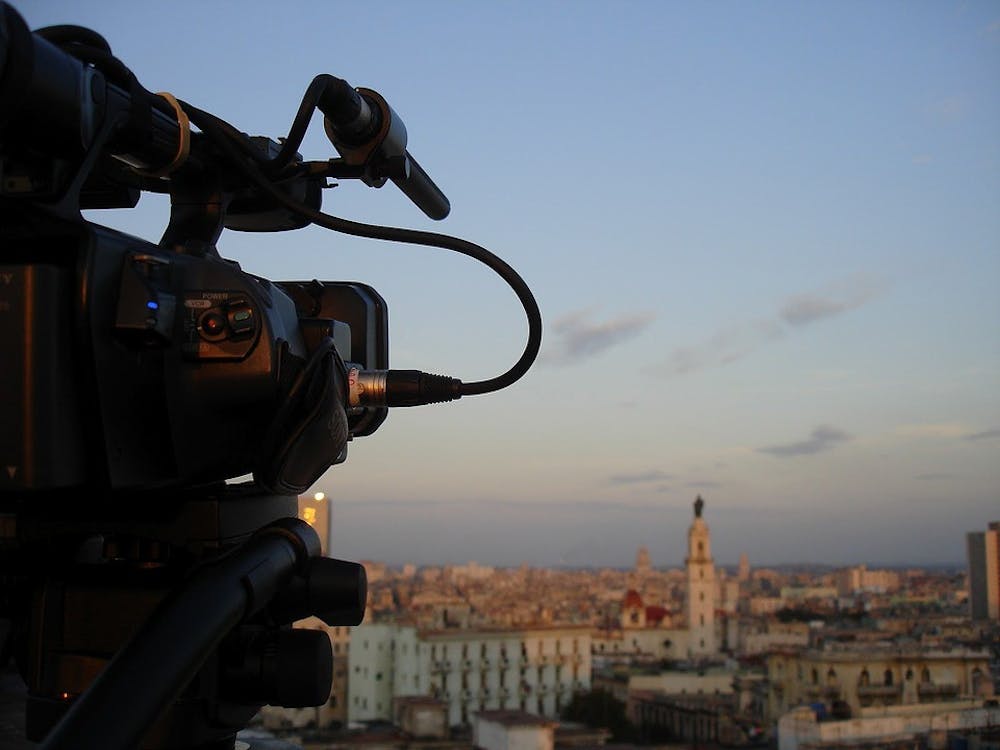Christine Chubbuck was born in 1944. She had two brothers, Tim and Greg. She attended Laurel School for Girls in a suburb of Cleveland. She went to Boston University to study broadcast. After a few years working on the East coast, she got a job hosting a morning show in Sarasota, Florida. On the side, she volunteered at the Sarasota Memorial Hospital giving puppet shows to children with intellectual disabilities. On July 15, 1974, she shot herself on live television. That’s what’s true. That’s what’s non-fictional.
In typical fashion, director Robert Greene includes facts about Christine in his documentary Kate Plays Christine, but his focus is on teaching a broader lesson: all documentary films contain elements of fiction storytelling. He follows Kate Lyn Sheil, an actress, as she prepares to delve into Christine’s mind for a role. Kate attempts to understand uncertain things such as depression, suicide and divorce. The audience trusts her, follows her (dangerous!) method acting process and learns a lot. But the audience never sees Kate’s final project, because the audience had already been watching it. Greene, in a magician–like move, uses Kate and the pretense of non–fiction that surrounds documentary to make the audience believe what they were seeing was real. Yes, Greene’s film says truthful things about Christine, but that doesn’t make it real.
By the time his film ends, Greene has made obvious what is usually so subtle about documentaries: they’re all at least partially untruthful. Documentaries rely on manipulation of our expectations. In other words, they’re goddamned liars! Before Greene’s big reveal, the expectation was the information in Kate Plays Christine was to documentaries as Rachel Carson’s Silent Spring was to non–fiction books. People are taught to trust non–fiction without regard to medium. Remember the Dewey Decimal System? It was only for “true” books! But it’s hard to place blame because the logic makes sense: The Lord of the Rings film trilogy didn’t happen, the police case in Thin Blue Line did happen, so you admire the artistic value of one and trust the other. But in films, footage is cut, characters are edited out of the story and events are placed in a specific sequence to emphasize importance. Of course, non–fiction authors cut out information and order things accordingly too, but they have potentially thousands of pages to include all that they can. Documentaries are condensed into a 2–hour package. Non–fiction authors often have their research peer–reviewed and edited through publishing companies before they are released. Often, no such restrictions are placed on non–fiction filmmakers.
All this said, why do we consider documentaries to be easy substitutes for book learning? A study on statista.com shows that, since spring 2008, the amount of regular TV viewers in the United States who watch documentaries has increased from 70.8 percent to 93.8 percent. People are relying on documentaries for their information more than ever. Perhaps because non–fiction is a broader term than we’re taught, but that’s a longer discussion. It’s more likely that documentarians lack transparency about their intentions in making their films. For example, Joshua Oppenheimer’s Act of Killing uses reenactments to show the gruesome reality of the Indonesian genocide from 1965 to 1966. Non–fiction books can’t show us a reenactment and instead rely on disseminating researched information. Yes, the audience watches the reenactments. They’re dramatized to almost an eerie comedic effect. However, Oppenheimer’s film still lacks Greene’s film’s moment where the audience realizes that none of this was real. The actors are the actual generals (now, the leaders of a military–run Indonesia) who facilitated the genocide, and they’re describing lived experiences, so it can be easy to take these reenactments at face value. Little does the audience know, they’re placing their eggs in a bunch of extremely violent old men’s memory baskets. And how should they know this without Oppenheimer’s revealing his intentions? An audience full of people who expect documentaries to be true likely will believe these reenactments, and they likely could be led astray.
Like many documentary viewers, Greene’s audience assumed that documentaries provide truthful information aimed at enlightening society. Likely, other audiences assume the same thing when they watch documentary films. The only difference with Greene is that he’s transparent with the audience. At the end, when Kate’s acting preparation does not result in the making of an actual film, there’s this moment of revealed non–reality. Blurring this line between true and false can be dangerous in a medium that carries such weighty expectations, but Greene’s experiment has made people look at documentaries in a new way—the way people should have been looking at them before.







